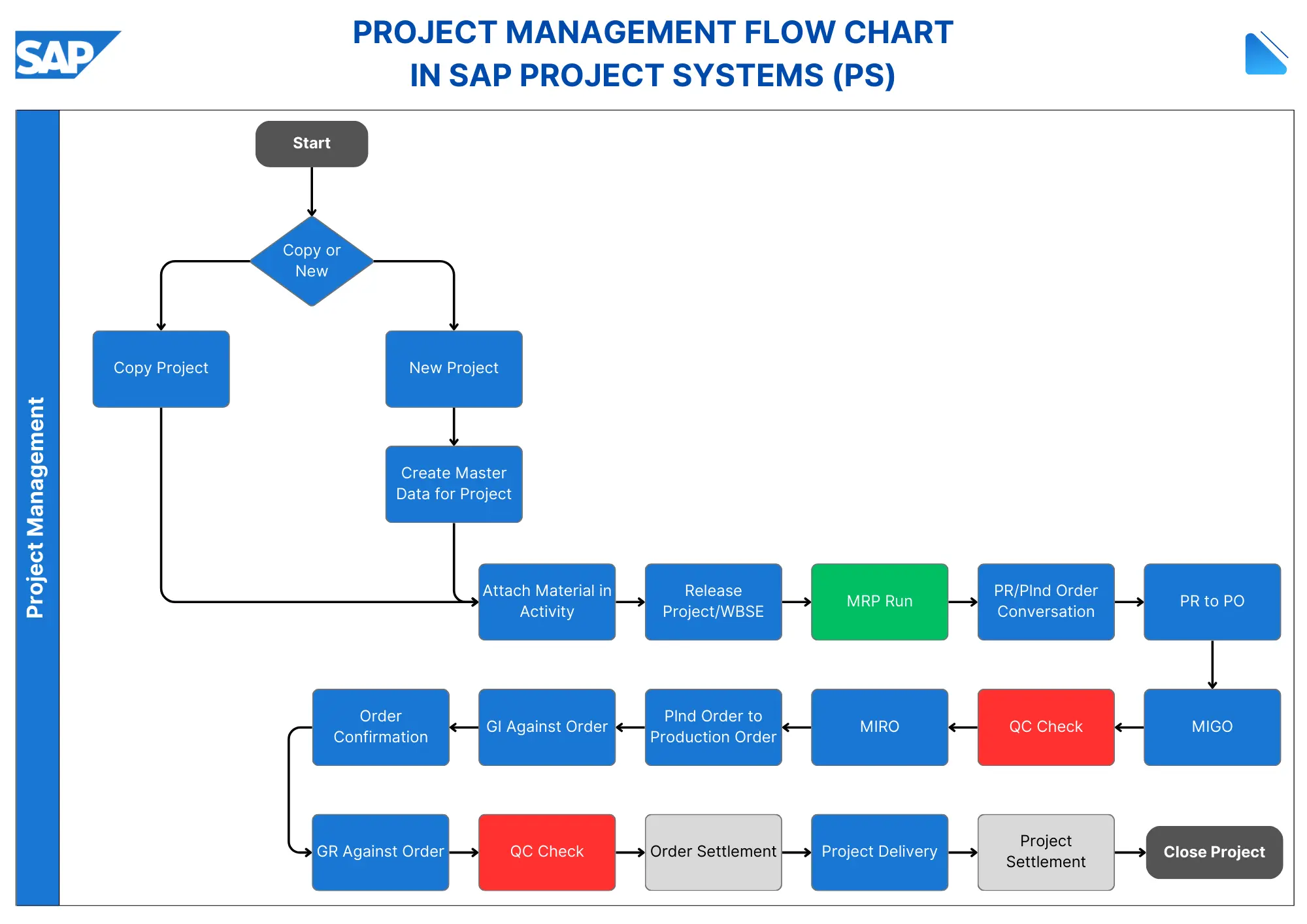The end-to-end project management process in SAP Project System (SAP PS) involves several key steps from project creation through execution to closure. This process is intricately linked with other SAP modules such as Materials Management (MM), Quality Management (QM), and Production. Below is a comprehensive overview of the key steps involved:
- Create Master Data
The first step in the SAP PS process is to create master data, which includes defining the project structure, such as Work Breakdown Structure (WBS) elements and networks. This hierarchical organization allows for detailed planning and tracking of project activities.
- Attach Material in Activity
Once the master data is established, materials can be attached to specific activities within the project. This integration ensures that all necessary resources are accounted for in the planning phase.
- Release Project/WBSE
After setting up the project and its components, the next step is to release the project or WBS elements. This action signifies that the project is ready for transactional activities, allowing for budget allocations and resource assignments.
- MRP Run
With the project released, a Material Requirements Planning (MRP) run can be executed. This process helps in determining the materials needed for the project and ensures that they are available when required
- PR/Planned Order Conversion
Following the MRP run, planned orders can be converted into Purchase Requisitions (PRs). This step is crucial for initiating procurement processes within the MM module.
- PR to PO
Once PRs are created, they can be converted into Purchase Orders (POs). This integration with MM allows for efficient procurement of materials necessary for project execution.
- Order Confirmation
After placing orders, confirmation of these orders is essential to ensure that materials will be delivered as scheduled. This step helps in tracking order status and managing supplier relationships effectively.
- Goods Receipt (GR) Against Order
When materials arrive, a Goods Receipt (GR) is recorded against the respective order. This step updates inventory levels and confirms that materials are available for use in the project.
- Invoice Receipt (IR) Against Order
Once goods are received, an Invoice Receipt (IR) is processed against the order to ensure that financial transactions reflect accurately in accounting records.
- QC Check
Quality Control (QC) checks may be performed on received goods to ensure they meet specified standards before being used in project activities.
- MIGO
The Movement In Goods Out (MIGO) transaction is utilized for various inventory movements including GR and other material transactions related to the project.
- Order Settlement
At this stage, costs incurred during the project execution are settled against respective orders or WBS elements. This process ensures accurate financial reporting and cost management within SAP PS.
- Project Delivery
Once all activities are completed, the project delivery phase begins, where deliverables are handed over to stakeholders or clients as per contractual agreements.
- Project Settlement
Finally, after successful delivery, a comprehensive settlement of all costs associated with the project takes place. This includes closing all financial transactions related to the WBS elements and ensuring that all costs are accounted for.
Integration Points with Other Modules
- MM (Materials Management): Integration occurs during procurement processes, including PR creation, PO conversion, GRs, and IRs.
- QM (Quality Management): Quality checks are integrated into material receipt processes to ensure compliance with quality standards.
- Production: Activities related to production planning can be aligned with project timelines through network planning features within SAP PS.
By following these steps and leveraging integration with other modules, organizations can achieve efficient project management and control throughout the entire lifecycle of a project in SAP PS.
